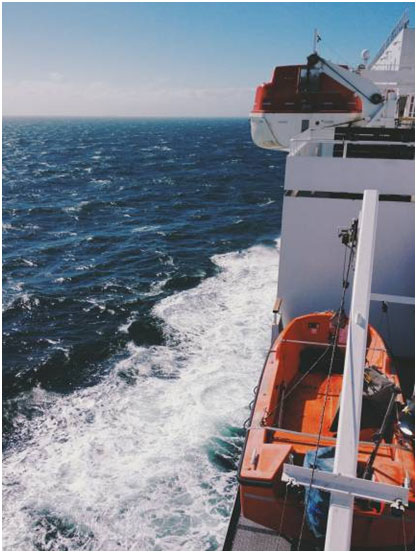
Maritime museums vary greatly; some feature one ship, such as the museum ship Norgomaat, the St. Mary's River Marine Center in Sault Ste. Marie, Ontario, Canada, and the U.S. Naval Museum/Submarine USS Ling in Hackensack, New Jersey. Many larger museums also exist that feature several vessels, exhibit areas, and a significant staff. Patriot's Point Naval and Maritime Museum (Mt. Pleasant, South Carolina), Independence Seaport Museum (Philadelphia, Pennsylvania), and San Francisco Maritime Historical Park (San Francisco, California) constitute examples of excellent large facilities. North America has many, many examples of museums of excellent quality large, medium, and small. Positions vary accordingly.
A curator serves as the professional caretaker of the museum's collections. In a large museum several curators would be employed, with a director serving as the administrator. In a small museum the curator usually also serves as the manager. In recent years, many museums have added an education director.
Museums must carefully display their collection to interest and educate the public. Curators and their staffs plan the exhibits of artifacts: ships' anchors, pieces of eight, tools, weapons, photographs, maps, charts, and similar items. Often an organization or individual will lend items for a specific display.
Ship and artifact restoration is an important craft related to museum work. The Naval Academy Museum collection emphasizes the history of the Navy (uniforms, ship models, and flags), and the Patriot's Point Naval and Maritime Museum in Mt. Pleasant, South Carolina, has as its focal point the USS Yorktown and the N.S. Savannah. This museum plans dramatic expansion of its facilities. The Alexander Henry, a three-thousand-ton icebreaker, forms the focus of the museum of the Great Lakes at Kingston in Ontario, Canada.
Maritime museum careers begin with a strong interest in the sea. Some employees are history buffs; others are professionally trained people with master's degrees or PhDs in history; a few have had course work in museum studies.
Some museums, such as the magnificent Mystic Seaport Museum in Connecticut, offer internships in museum studies. Normally these are master's level programs associated with colleges. The work generally takes place indoors and offers opportunities to work with historical artifacts as well as with the public.
Many museums have youth programs. For example, the Gazela of Philadelphia has a sea cadet organization. Mystic offers opportunities for sleep over for school students as does Patriot's Point for Girl and Boy Scouts. They and many others offer summer programs. Activities such as these offer an excellent opportunity to test the waters of this profession.
Marine Insurance Careers
All ocean-related industries require insurance; ships, off-shore platforms, cargoes, yachts, marinas, shipbuilding companies, and similar businesses insure themselves against loss. This is not a recent phenomenon. The Insurance Company of North America (now CIGNA), founded in 1792, issued its first policy to cover the American, sailing from Philadelphia to Londonderry (Ireland).
A typical person entering the marine insurance field at CIGNA (usually a college graduate) would spend the first six months learning general insurance and take correspondence courses on marine insurance. After that, the employee would attend the company's formal Marine and Aviation School, approximately four weeks long. Following school, individuals receive their assignments and begin their careers selling insurance, investigating claims, providing safety programs, planning cargo loss control programs, arranging claims settlements, conducting safety inspections, and performing similar activities.
See the following articles for more information:
- Find Your Calling: A Checklist
- 5 Ways To Build Your Career Outside of the Office
- How To Impress Your Interviewer When Making a Career Change
- 5 Tips For Successful Networking
